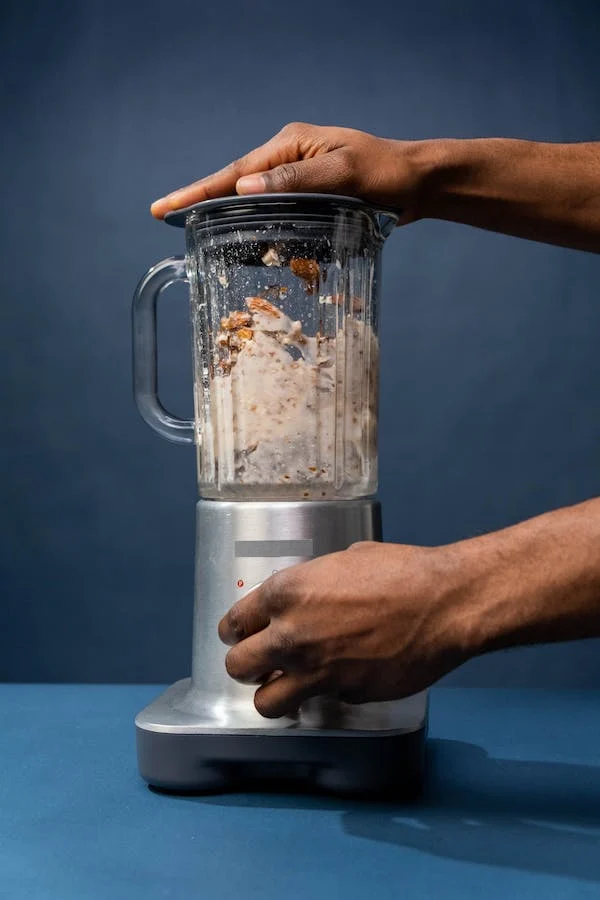Are you often confused as to what makes a food processor different from a blender?
Don’t worry – not only is this a common question among regular folks, but you would be surprised to learn that it is also a common question among all novice chefs.
While there are plenty of similarities between these two appliances – that being that they each have fast-spinning blades to chop items into small pieces – they are quite different in terms of what their purpose is.
To get clarity on each of these items, what they are used for, and what makes them different, we hope to help bring more clarity in terms of which one is better suited for your needs.
What is a Food Processor?
If you are wondering what a food processor is, the simple answer is that it is considered an all-around kitchen must-have. In short, for those who do a lot of prep work when they are in the kitchen – especially the work that is really tedious – this is the tool for you.
Those who work with this machine find that when they switch the blades and discs, use different speeds, and the pulse function, it gives them great control over their meal. Food processors tend to have a wide work bowl and an S-shaped blade at the bottom of the bowl.
While they are ideal for working with dry ingredients (as in the case of herbs and graham crackers for pies), they can also work magic when kneading dough, shredding cheese, or cutting tough vegetables like carrots.
What is a Blender?
A blender, by comparison, is a tool with a jar and blades at the bottom. This tool is great at cutting food into small particles as the machine whirls them around.
It’s a great tool if you need to create purees or liquify a set of items for soup (as an example).
Since consistency is key, blenders are ideal for blending something down into a smooth texture.
That said, blenders can also make great frozen drinks, whip cream for dessert, crush ice, or blend eggs so that they can cook into a fluffy omelet.
Blades in Blenders vs. Food Processors
If you are wondering about the blades in both machines, the difference between them is that in blenders, the blades sit flush in the bottom of the jar.
In the case of the blades used in both of these machines, they tend to come in two main types: x-shaped blades and wing blades.
X-shaped blades are usually created in a star-shaped design with four blades – though you might find that some models come with six blades.
A good note is that if your machine has more blades (let us say six), it is considered a better machine because it can do a better job with more. That said, most household blender models only have four blades.
Alternatively, wing blades are flat blades with blunt edges. These blades tend to turn up or down, and as such, they are far better at crushing hard ingredients.
As a result, these blades are better at doing tasks such as crushing ice or blending frozen drinks and smoothies.
Work Bowls for Food Processors vs Blenders
In terms of the jars of each of these items, blender jars typically come in glass or plastic. In terms of shape, they are either designed as a square or round.
When deciding which to purchase, this all comes down to issues of cleaning and handling – that is, if you go with glass, please note that it is much heavier though it tends not to absorb odors as plastic does. In terms of design, the blender jar is meant to create a vortex that stirs liquid and funnels it down toward the blades so that it can blend better.
In the food processor, this machine alternatively uses a wide bowl. Ultimately, this design makes it much easier to add recipe contents as well as scrape the sides once the mixing is done. And all of this is possible without the blade getting in the way.
When searching for the right food processor for you, remember that there are also models that come with multiple bowls as well in the event that you need a number of them to complete a single recipe.
Best Foods for Food Processors
If you are curious as to what foods have the best results in food processors, the first we would suggest is baby food as in the case of pureé fruits and vegetables.
Another great food option is salsa, given that the food processor allows you to control the size of the chopped ingredients.
Other great food items for this tool include hummus and any kind of purees (as in the case of pesto and nut butter). Just note that if you are having trouble with the mixing, you may want to add more oil.
Best Foods for Blenders
If you are curious about the best foods for blenders, this list is a bit different.
According to The Good Housekeeping Institute, one of the best items for blenders is smoothies and icy drinks (whether they are cocktails, milkshakes, daiquiris, or frozen wine into frosé).
Another great option is making soups in your blender. Blenders – especially immersion blenders – will get your soup to the absolute right consistency, and some will even warm up that soup mix as well.
In a nutshell, solid food-prep activities require a food processor, while liquid-based recipes, such as soups and drinks, call for a blender. It might well be the case that you need both instead of picking between buying a food processor vs blender.
